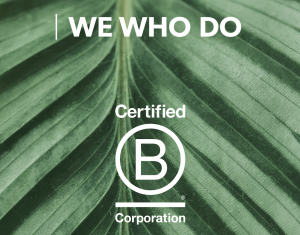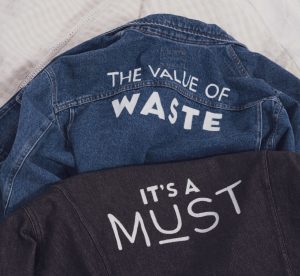It feels almost as though we have all been blind to the changes happening in the world around us, oblivious to the fact that customers care and consumers would demand action. We were ill-prepared because it seems a lot of us haven’t really been listening.
Brands and consumer demand of brands are changing. So how can we help brands set up to navigate this change, to continue to be relevant as movements develop and consumer behaviours change? How do we set brands up to survive and thrive for the next 20 years? I think the key to staying relevant is to listen, and actually hear and understand. We know consumers want to buy from brands that care about things. We as brands and brand guardians should really know the things consumers care about and way before they start demanding a brand response. We shouldn’t be reacting, we should be proactive. We shouldn’t be knee jerk, we should be in the thick of it facilitating change.
Here are some thoughts on how we can all get better at listening.
Take some action… the good news, it isn’t too late to start properly listening. All brands can start to be more relevant now and help protect brands in the future, even if you’ve got it wrong before. Consumers are savvy enough to understand and will appreciate that you are going on a journey if you are honest about it
The first step on the road to a truly consumer first brand is for brands to act like the human you say you want to be. If you have got it wrong before or you weren’t listening in the way consumers wanted you to, then stand up, say you’re sorry and be held to account by the consumers you serve. But make sure you are clear about the changes you are making with real, tangible outputs, and be honest about when you hit them and when you fail.
Consumer activism isn’t a trend, it is a new expectation of brands, so even if this takes you out of your comfort zone some level of activism will be part of the brand and consumer landscape for years to come. Activism is by essence active, not passive. That means brands need to have actions, be seen to be doing things and be true. Even if these are small steps. Actions speak more powerfully than words.
Brand and consumer relationships have changed. This is now a 2 way relationship more so than ever before. Understanding the changing rules of the relationship will help brands build deeper relationships
In recent years, brands have been asking for a more human relationship with their consumers, acquiring personal data, connecting on an emotional level, being on social media platforms they share with friends and family. The problem with human relationships is that they have to be two-way. If you demand a deeper relationship with your customer, then you have to be prepared for customers to demand a deeper relationship with you.
Consumers have always been vocal in their beliefs but social media has given these voices scale and volume. What has changed is they’re now voicing their concerns more loudly and in unison, which has turned individual thoughts into collective activism. As a result, this has created demand for action and reaction from brands on the issues they care about. This surge in demand is, I believe, a by-product of the deeper conversations brands have been wanting from their customers. They are treating you like friends, but with this friendship comes great responsibility.
So find ways to immerse yourself in the world of your customers, speak to them and try to see things from their perspective. Be empathetic and be an ally. Your consumers are already telling you what they want you to do, you just need to be open to hearing it. Your actions should reflect customer demand, so look at how your community feels and which of their problems they want you to help solve. Once you know these things, be open, honest and up-front in delivering that role, however uncomfortable it may be at times. This means more than a few token posts on social media.
Social media listening needs to be used beyond a buzzword to measure brand metrics, but a really useful tool to get under the skin of conversations for those you are trying to reach.
Often when brands talk about social media listening and community engagement, brands want to discuss brand mentions and sentiment. We focus on hearing the conversations going on immediately around us and our brand universe. We need to be prepared to listen more widely and truly understand consumers as humans. We have all been guilty of thinking that the only important conversations we need to listen to have been about brands/ category/ competitors/ business. We have forgotten about the human conversations that can tell us so much. By limiting what we listen to we miss all the other really important conversations consumers are having with each other about things they care about. We miss the signs that consumers want change. We miss things that they care about. We miss problems they want us to solve. We miss the next big consumer demand that will shake the brand and marketing world.
Moving the conversation beyond brands and building a much deeper understanding of those they engage with will help brands maintain their relevance and see consumer demands as they’re approaching. This helps to take the element of surprise out of consumer reactions and demands from future cultural movements and societal changes. After all, if you understand what is keeping your consumers up at night then you won’t be surprised when they want you to help them make changes in their world.
Brands will need to prioritise consumer insight – beyond white papers and trend reports – to spend much more time and money really listening to and understanding the humans they are connecting with. As opposed to focusing solely on purchase patterns, behaviours and brand sentiment. While the latter is important, combining this with human insight will give brands a better idea of the consumer whole. This will help brands be more proactive and be able to make business changes as the needs of the society in which they operate change.
Be community first – understand who you’re a brand for. And be there for them.
It is a commonly used phrase, but brands need to move away from brand first to consumer first. We need to be a bit brave here and do it, not just say it. I would also take this a step further and say community first. By thinking of consumers as part of a larger community helps us to focus on broader behaviour and conversations. By widening reach from demographic segmentation to community patterns and empowerment, brands will be able to put listening into a context where they can operate more successfully.
By understanding the humans and our communities on a deeper level, we will understand the issues they want brands to be part of. They can then be ready for movements, societal change and changes in consumer behaviour to adapt brands for change. By seeing the challenges as they evolve, there will be well-thought-out plans of action, clear KPIs and, most importantly, a transparent, authentic and believable response to real problems. It isn’t a marketing response, but a human one. Sometimes that will mean picking a side, because silence often picks the side for you. However, if you know the consumers well enough, choosing that side won’t be hard, scary or leave you worried about upsetting others. It will be a genuine, plausible reaction. With a finger on the pulse, you lower the risk of being caught out or getting it wrong.
It’s worth remembering that we can’t please everyone all the time. No matter what brands do, there will be an element of criticism. The decisions we make will be right for your brand community and the people you engage with, but it won’t be a position shared by all. But brands shouldn’t want to please everyone, because ultimately that is what leads to beige, functional and uninteresting – which nobody wants. People-pleasing is arguably why we are so often slow to react. Brands often make the mistake of thinking not picking a side will protect them, but that’s a short-term outlook. Not having an opinion if your community has one and wants you to have one is not the safe option here. Consumers want brands to stand for something, the reality of that is sometimes they want you to pick a side.
Surround the brand with multiple community voices to give all voices a chance to be heard
We couldn’t have a conversation about brands listening more to consumers without talking about the need for the brand and those in charge of budgets, creative and activations to be diverse to ensure that all community voices can be heard equally. There are so many reasons why this is the case, but to keep to my point about listening, I will focus the debate here. Listening involves hearing all voices equally. For a brand to be a reflection of the community it serves, it needs to listen to all the voices to understand what’s going on and how they are feeling. Even if you’re committed to listening to consumers to help shape brand direction, if those listening to voices aren’t from a range of backgrounds, cultures and demographics then the inequality of conversation will continue. And so will the likelihood that brands get it wrong, miss a consumer demand or signs of change because they don’t understand the full picture. A key place for brands and agencies to focus on is building brand teams that truly represent the communities we are working to reach. Representation in the process will likely have a really good impact on the final result.
Summary
Brands that are truly community first, listen to the challenges and issues of the humans they are trying to serve will be those that survive. Pivoting brands to be community servers is a long-term plan, which cannot be measured by short-term objectives. If you want to be truly relevant you need to prepare to evolve to future consumer demands or societal changes as the humans that interact with your brand evolve. That can feel scary if we feel brands might lose an element of themselves, but we need to think of brands as fluid not fixed. Especially now. Our brands are what consumers say about them, not what we write in a brand book. If consumers’ thoughts on our brands change, then like it or not, the brands and brand meanings change.
Talk and listen, but hear what’s being said. Brands need to solve business, human and societal problems. When you place these issues at the heart of what your brand stands for, you are better placed to react, be proactive and drive the changes which will keep you relevant.








